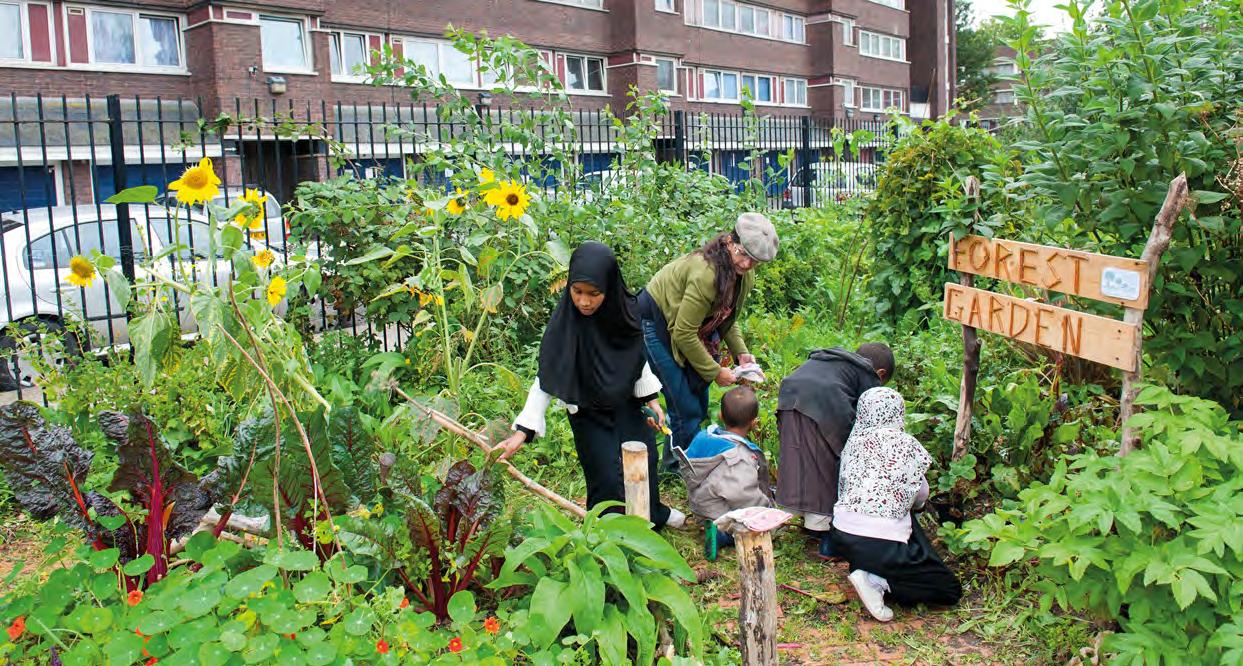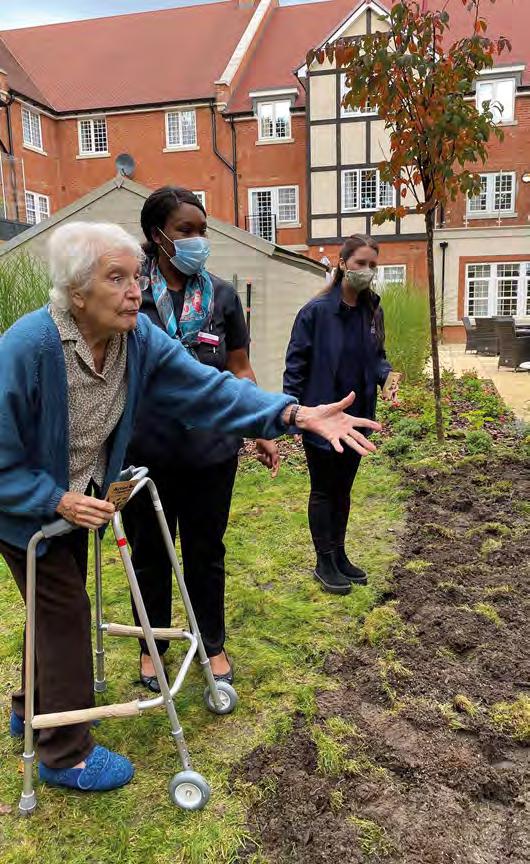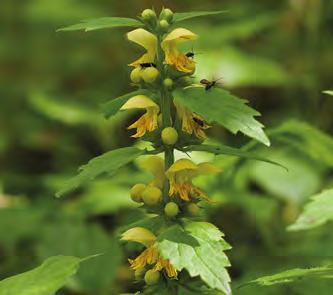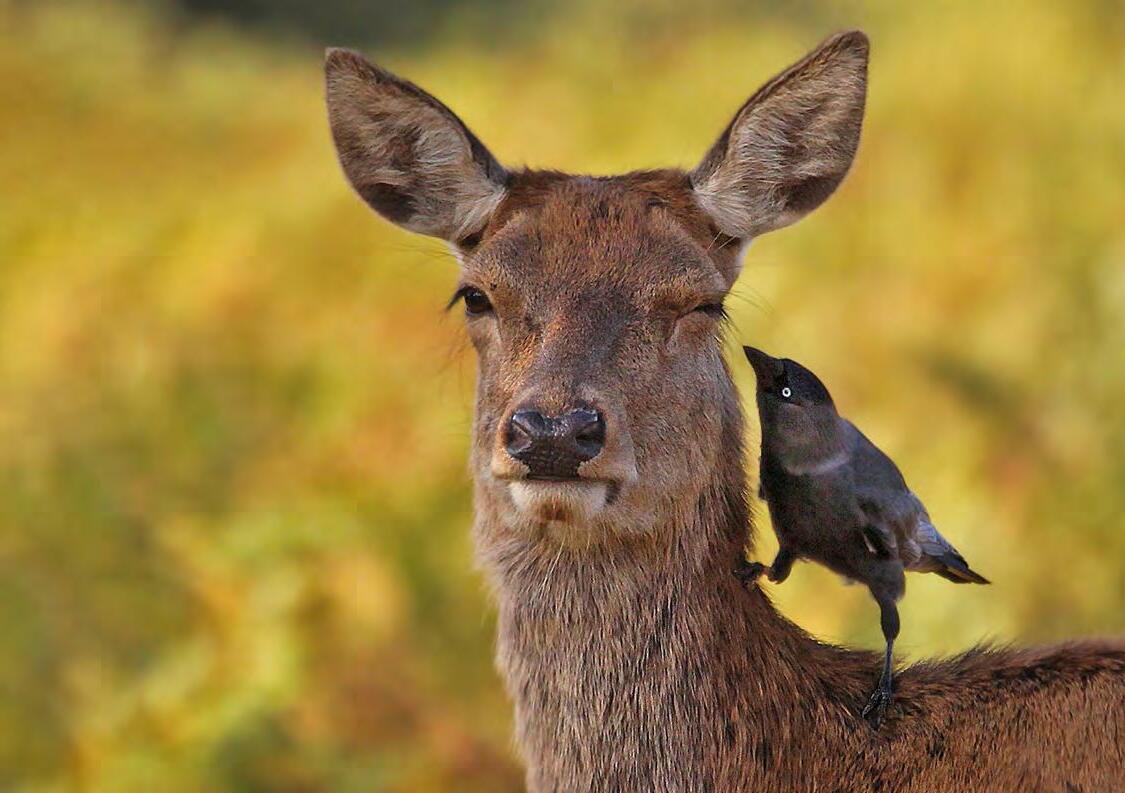
11 minute read
Taking action in the urban world
To achieve our vision of a Wilder Essex, wildlife needs to be able to expand across our landscape. From rivers to road verges, woodlands to ponds, and gardens to city parks, we need to restore our landscape and connect up our wild places, so the county can be a safe haven for nature. As our climate changes, creating corridors will not only help bring wildlife back, it will help it become more resilient in the face of climate change.
While only 30% of Essex is considered to be urban, 80% of residents in the county are considered to be ‘urbanites’. It’s here, in our urban environments where local people are taking local action for nature. This people-power within communities is vital to creating real change for the better.
taking action

for nature
Bird box volunteer photo: Evie and Tom Photography

The county of Essex is home to over 1.8 million people. Encouraging positive steps towards wildlife-friendly practices from every person in the county seems a daunting task. However, research has shown that if 1 in 4 people are willing to take action for wildlife, this will reach the tipping point at which taking action becomes the norm within society.
The Trust is thus working towards getting a quarter of Essex’s population to be taking action for wildlife by 2030. To do this, we need active community members who can help make our county wilder.
To deliver the vision of a Wilder Essex, we’ve created a network of projects and campaigns under our Team Wilder banner. Team Wilder is a people-powered movement which aims to empower and give local people the tools to transform spaces for nature. We recognise each and every individual has different skill sets and knowledge that will help contribute to positive conservation actions.
Community engagement programmes allow the Trust to use our strengths and expertise to inspire individual and collective action. By removing barriers and widening access to nature for all, we can tip the scales back in nature’s favour. Our nature reserves and Nature Discovery Parks remain free to visit, and with over 100 sites in our care, there is a local green space near every community that we want people to feel confident and capable to engage with. Our reserves are protecting wild places for perpetuity but we know that conservation must spill out from the boundaries of nature reserves, and into our urban landscapes.
The Trust is now working on more community organising programmes to help create long-lasting projects within local spaces. By listening, supporting and empowering local people, together we can connect up our fragmented landscape and transform Essex for the wilder.
In our spring edition of WILD, we announced the launch of our Urban Wildlife Champions project. We asked individuals and community groups to sign up as champions to create projects within their communities and local areas, with toolkits and guidance from the Trust. We have launched a series of meetings, site visits, training opportunities and webinars to offer support and knowledge on how best to deliver each project. The Trust is working to create a people-powered movement, where communities have the capacity and tools to make the changes they want for wildlife and people.
Over 100 people and groups signed up to the Urban Wildlife Champions project in the first two months. Each individual is going to help inspire hundreds of others to take action for nature. We are very excited to begin working together and we look forward to updating all of our members on the many inspirational projects in future editions of WILD.
Many champions are already at work launching and developing projects in their communities. The Wickham Bishops Biodiversity group has already crafted and installed fantastic bird and bat boxes along a popular route within their village. In Leigh-on-Sea, Steve Barrow is leading a group of volunteers on a mission to restore grassland habitat. By reducing mowing regimes, collecting cuttings, raking and seed sowing, they are hoping to create the perfect habitat to support invertebrates. In Brightlingsea, the Greener Gardens Group are supporting residents, businesses and organisations transition to a greener and more wildlife-friendly way of gardening.
Volunteer photo: Penny Dixie



In Wivenhoe, a group of dedicated local residents launched an inspirational community project last summer. After noticing the unmown verges in the early stages of lockdown, they marvelled at wonderful wildflowers springing up. The group took it upon themselves to contact the town council about trialling unmown areas and surveying the results. The town council agreed and in March 2021, the Green Spaces project officially began.
Sites were chosen, neighbours were notified, surveying volunteers were recruited, and signs were erected. Throughout the summer, the verges and green spaces were left to grow wild and surveyed for wildflowers each month. In total, 141 different wildflowers were identified, up to 30 times more species than when the areas were mown and managed. When asked, 95% of residents approved of the newly rewilded spaces, with many celebrating the blooms on social media. The local community were inspired by the project to let their green spaces grow wild and one lady even reported more bats in her area, putting it down to more insects on the verges. A new resident to the area said “Wivenhoe looks like the countryside – it’s awesome. So glad I came here.” Following the great success of the Green Spaces project, new initiatives were launched this year, including the Wivenhoe Gardening for Nature project in collaboration with Beth Chatto Gardens, which encourages wildlife gardening. Some of the volunteers are producing wildflower books for the children of Wivenhoe and the group have been able to share their experiences and successes with other towns and villages.
Mark Halladay, a member of the Green Spaces project says another 15 sites will be joining the project this year. “This means nearly half of the town’s green spaces will be involved. This year’s sites are more prominent and will test public reaction further. Biodiversity will increase when we leave the grass unmown – we know that. It is peoples’ reactions that will determine whether we can keep doing it. After that, who knows? We might be able to just let the grass grow and relax!”

Community garden photo: Paul Harris/2020VISION

Join the movement
Register to become an Urban Wildlife Champion on our website at www.essexwt.org.uk/urban-wildlifechampions. You will then receive a welcome pack and toolkit to kickstart your wildlife journey. Visit the webpage to also view the live map of champion’s projects when they’re set up.

The Trust is now extending this work to engage with Essex’s councils. We would like to see every house integrated with bird and bat boxes, road verges should be alive with wildflowers and insects, urban trees should be protected and cared for, and green spaces should be a mosaic of habitats, free of pesticides.
Essex Wildlife Trust’s Wilder Towns, Wilder Villages project launches at the end of June and we will be working with parish councils to create positive change for wildlife in each community. We will be supporting parish councils to take significant and measurable action through meetings with Trust experts, conducting site visits to provide advice and providing free webinars to upskill councils on wildlife-friendly practices.

Volunteer photo: Penny Dixie
Nextdoor Nature
Essex Wildlife Trust is also working with the national Wildlife Trust movement to launch further community projects. The National Lottery Heritage Fund announced a £5 million investment towards all Wildlife Trusts in March, in a ground-breaking initiative to create a huge matrix of community-led rewilding projects – improving the lives of people from some of the most disadvantaged areas across the UK and leaving a lasting legacy in honour of the Queen’s Platinum Jubilee.
In Essex, the Trust’s Nextdoor Nature projects will involve working with communities in Thurrock, Basildon, and Clacton to create micro-projects benefitting both wildlife and people.
Danielle Carbott, Urban Engagement Officer for Essex Wildlife Trust, says “The project funding will help to increase Essex Wildlife Trust’s capacity to deliver community organising across more areas in Essex. Nextdoor Nature will help us to empower as many people as possible to champion wildlife wherever they live!”

Fox photo: Jamie Hall
Last year we launched our first Big Wild Seed Sow, with the aim to create many more wildflower blooms in the UK, providing insect-friendly habitat to allow insects to fly, jump, and flutter from wildflower to wildflower across the newly-created corridors in our landscape.
Between August-November we handed out free packets of native wildflowers at our Nature Discovery Centres – allowing anyone to take part in this campaign. Over 2,132 people sowed our carefully selected native wildflower seed mix in their gardens. With your help, over 4,000 square metres of brand-new insect friendly habitat was created.
We asked participants to plot their flower patch on our virtual Big Wild Seed Sow map to see the start of landscape connections. We hope your seeds are currently a colourful and fragrant refuge for insects, providing them with food, shelter, and a place to breed.


Wildflower photo: Paul Hobson
As the seed mix is made from both perennial and annual native wildflower species, you will be surprised by the new flowers emerging for years to come.
This year, we have over double the number of free seed packets available, from any of our Nature Discovery Centres. From Monday 8 August until Sunday 30 October, ask any of our centre staff or volunteers to collect your free seeds.
All you need to do to ensure they bloom is:

1. Rake 2 metres squared of bare soil 2. Scatter the seeds evenly 3. Lightly tread-in and water as required
Then add your wildflower patch to our virtual map, and watch your garden transform into a haven for insects.
Learn more about this project and view the map on www.essexwt.org.uk/
big-wild-seed-sow
Thank you to CNH Industrial, one of Essex Wildlife Trust’s corporate Investors in Wildlife, for sponsoring the project.
We’d love to see your Big Wild Seed Sow blooms. Send your picture to wilderfuture@essexwt.org.uk or tag Essex Wildlife Trust on any social media platform.
The Essex BioBlitz

Wildflowers are not only vital habitats for insects, studying them can help us learn about how climate change is impacting our natural world. Essex Wildlife Trust and the University of Essex partnered to launch the Essex BioBlitz this spring – a citizen science survey to study the timings of wildflower blooms.
We are aiming to record over 15,000 records across Essex using the free app iNaturalist. Each submission will help to map the effects of climate change on flowering plants across the county and contribute to scientific research.
To take part in this citizen science survey: download the app iNaturalist, available on both iOS and Android and create your own account. Take a photo of any wildflower in Essex when it’s in bloom – you don’t need to know what the species is as the app will help you identify the plant. There are no limits to the number of observations you can make, but aim to submit at least five images per week, throughout the summer.
Here are six wildflower species to spot whilst taking part:
Photo: Kieron Huston

1. Greater stitchwort 2. Ground ivy 3. Yellow archangel

4. Common dog-violet 5. Wood forget-me-not 6. Cuckooflower

Photo: Philip Precey Photo: Vaughn Matthews


Photo: Philip Precey Photo: Neil Wyatt Photo: Vaughn Matthews




Re-Cycle your bicycle
www.re-cycle.org
We need your used bike!
Our mission is to send recycled bicycles to rural communities in Africa. By donating your used bicycle to Re-Cycle, you will be enabling people to have access to transport and better life prospects in Africa.
For more information about Re-Cycle, bike drop off locations and ways to dontate please contact us:
Phone: 01206-617865 Web: www.re-cycle.org
Unit 8 The Grove Estate, Colchester Road, Wormingford, Colchester, Essex CO6 3AJ
@bicyclecharity
Discover nature on the go

The Wildlife Explorer podcast delves into the secret lives of some of our best-loved wildlife. Featuring experts from across the Trust, special guests, top tips to help wildlife and fun facts. It’s well worth a listen!
Don’t forget to subscribe and leave us a five-star rating to help us reach more nature lovers!
Love Essex • Love Wildlife
Deer and jackdaw photo: Jon Hawkins - Surrey Hills Photography
Listen to The Wildlife Explorer podcast on
Spotify, Apple Podcasts
Psst...Did you know Jackdaws love shiny objects and all other online podcast platforms. just as much as magpies?






